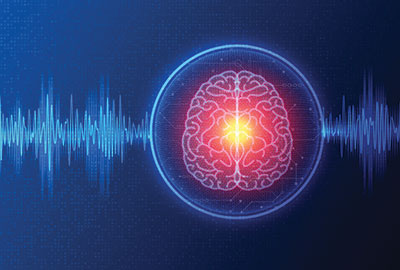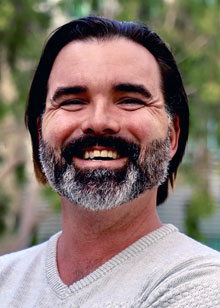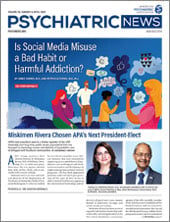Electroconvulsive therapy (ECT) has been a staple of depression care for more than 85 years, yet much remains unknown of how ECT produces its antidepressant effects. New research appearing in Translational Psychiatry suggests that a set of brainwave signals known as aperiodic activity may be important for both ECT and a related technology called magnetic seizure therapy (MST).
ECT and MST are tools that use electrical or magnetic energy, respectively, to deliver controlled, therapeutic seizures to the brain to jump start dysfunctional neurons.
As senior study investigator Bradley Voytek, Ph.D., explained, most research examining the brain’s electrical activity focuses on rhythmic brainwaves that can be easily recorded by electroencephalography (EEG) machines. These brainwaves are divided into several groups based on their frequency (with names like alpha, beta, and theta waves). Underlying these rhythmic, or periodic, waves is a sea of seemingly random patterns known as aperiodic activity.
“It looks like background noise, but there are signals in that randomness,” said Voytek, who is a professor of cognitive science at the University of California, San Diego, and on the faculty at UC San Diego’s Halıcıoğlu Data Science Institute.
Patients with depression tend to display larger low-frequency brainwaves following ECT therapy—a phenomenon known as clinical slowing. Voytek wondered whether this rise in “slow” brainwave activity might be due to increased aperiodic activity making the rhythmic waves appear larger.
A few years back, Voytek and his lab developed a
software program capable of distinguishing periodic and aperiodic signals from an EEG reading. With graduate student Sydney Smith leading the way, Voytek and colleagues at UC San Diego and elsewhere examined EEG data from nine adults with major depression who were receiving ECT at the VA San Diego Health System. Using Voytek’s software algorithm, the team
found that the post-ECT increases in low-frequency waves were due to increased aperiodic activity.
The researchers next analyzed EEG data from a sample of 22 patients with depression who had received ECT and 23 patients with depression who had received MST. Smith and colleagues
observed that MST and ECT resulted in slightly different patterns of clinical slowing; however, in both cases, the brainwave changes were due to increases in aperiodic activity.
“The brain wave changes we observed line up with a long-standing theory about depression called the cortical inhibition theory,” Smith said. This theory posits that individuals with depression have broad deficits in their inhibitory neurons, which help regulate the activity of excitatory neurons. These deficits in inhibitory control contribute to the exaggerated stress response seen in people with depression.
Research has shown that aperiodic activity is partially derived from inhibitory neurons; thus, the increase in aperiodic activity following ECT or MST treatment may reflect a restoring of the brain’s inhibitory network. Increased aperiodic activity following stimulation was not found to be directly related to changes in depressive symptoms, however.
“Despite being linked to a promising mechanism of action, the lack of evidence for a direct relationship between increases in aperiodic exponent and the therapeutic effects of ECT and MST in this study presents a strong limitation,” the researchers wrote. “Although aperiodic exponent increases simultaneously as depression symptoms improve, the magnitude of these changes are unrelated in this sample, so aperiodic changes cannot be directly interpreted as a therapeutic mechanism of action for either treatment at this point.”
Smith is hopeful that obtaining data from larger samples of patients with depression who receive ECT or MST may identify changes in the patterns of aperiodic activity that predict treatment response.
“This research is an example of the type of work that needs to be done in the neuromodulation field,” said Sarah Lisanby, M.D., director of the Noninvasive Neuromodulation Unit at the National Institute of Mental Health. Lisanby, who co-developed MST, was not involved with the current study.
“Understanding how ECT works is a high priority because it is used in severely ill patients,” she said. “Unlocking its mysteries could lead to safer and even more effective treatment protocols.”
Lisanby was the lead on a recently published clinical trial that found
ECT and MST are comparable in their antidepressant efficacy. That Voytek and Smith’s study showing the two approaches produce similar changes in aperiodic activity supports the idea that the shared element of MST and ECT—seizures—is the therapeutic key.
Lisanby noted that both ECT and MST (which is still an experimental treatment) have been used to treat conditions such as schizophrenia and obsessive-compulsive disorder. “It would be interesting to see how aperiodic activity changes in people without depression. For instance, is this strictly an antidepressant response or is it a broad therapeutic effect of a [controlled] seizure?” ■
This research was supported by a grant from the National Institute of General Medical Sciences, along with a UC San Diego Pace Grant, Majda Grant, and Veterans Medical Research Foundation Pilot Grant.



